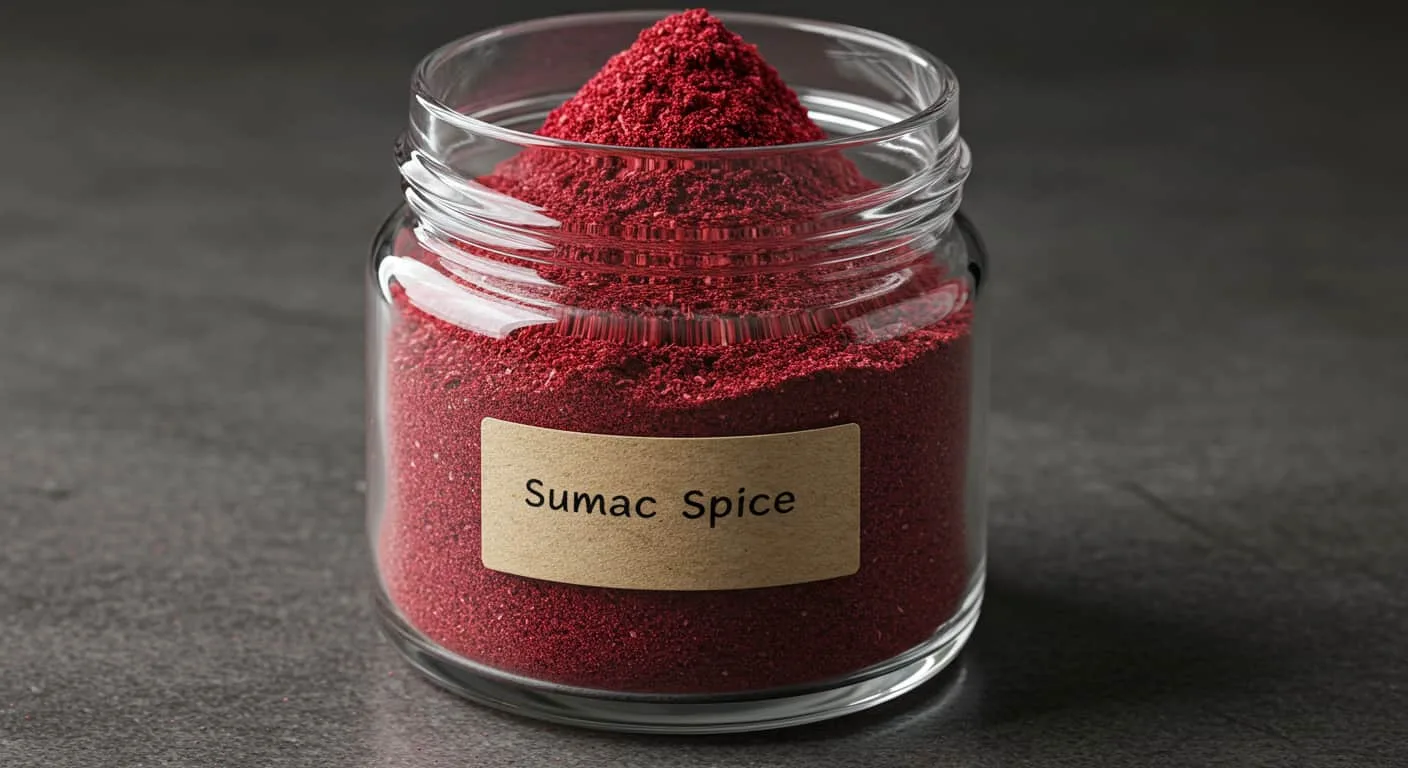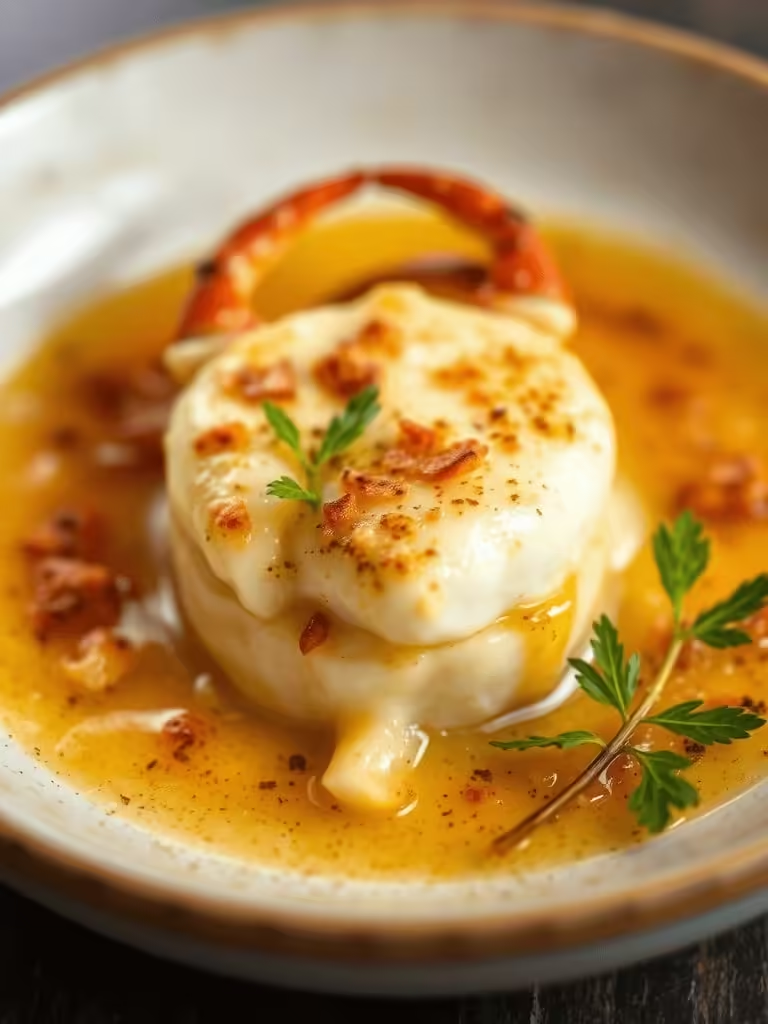Sumac Spice: The Ultimate Guide to Taste, Benefits, and Recipes
Have you ever stumbled upon a spice so rich in flavor that it instantly transforms any dish? Sumac spice is one such game-changer in the world of seasonings. Its deep red hue and citrusy tang make it a favorite in Middle Eastern and Mediterranean cuisine. But sumac isn’t just about taste—it boasts numerous health benefits and culinary applications that every home cook should explore. In this ultimate guide, you’ll discover everything you need to know about sumac: its origins, health benefits, substitutes, and delicious ways to use it in your kitchen.
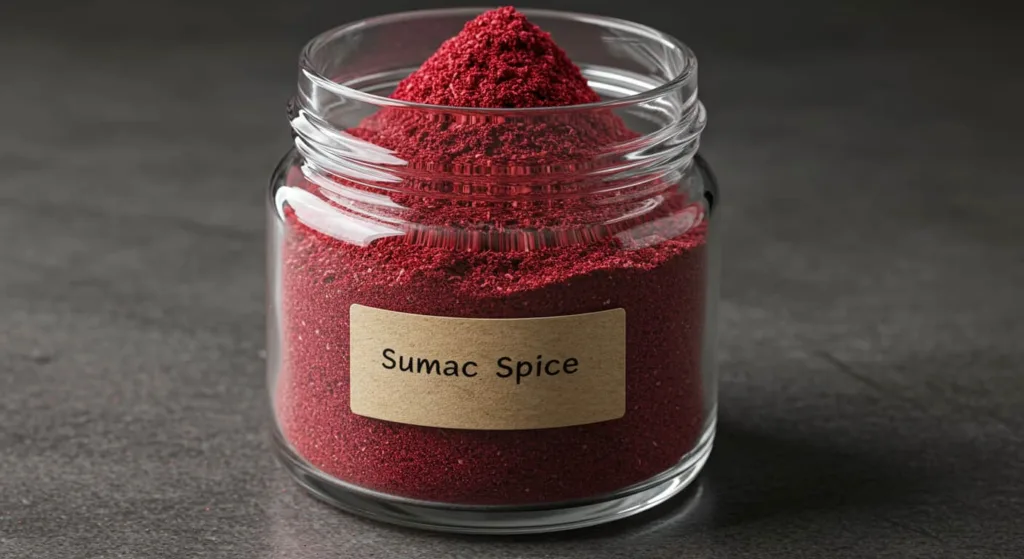
Table of Contents
- 1- What Is Sumac Spice?
- 2- Where Does Sumac Come From?
- 3- Sumac Spice Benefits
- 4- Sumac Spice Substitute
- 5- Where to Buy Sumac Spice
- 6- Cooking With Sumac
- 7- Sumac Spice Recipes
- 8- FAQs About Sumac Spice
1- What Is Sumac Spice?
1.1 A Brief History of Sumac
Sumac is derived from the Rhus coriaria plant, a flowering shrub that produces small, deep red berries. These berries are dried and ground into a fine powder, creating the vibrant and flavorful spice we know today. The name “sumac” comes from the ancient Arabic word summa, meaning “red,” a nod to its signature color.

1.2 Ancient Civilizations and Sumac’s Role
Sumac has been used for centuries in various cultures:
- Ancient Romans utilized sumac as a souring agent before lemons were widely available in Europe.
- Persians and Middle Eastern cultures incorporated it into traditional dishes for its tartness.
- Traditional medicine practitioners valued sumac for its antimicrobial and anti-inflammatory properties.
Today, sumac remains a staple in spice racks worldwide, offering an easy way to enhance flavors without overpowering them.
1.3 What Does Sumac Taste Like?
If you’re wondering how sumac tastes, imagine the tanginess of lemon zest combined with a mild, earthy undertone. It delivers a slightly tart, fruity kick, making it an excellent alternative to citrus in dry spice form. Unlike vinegar or lemon juice, sumac provides acidity without adding moisture, making it perfect for seasoning dishes without altering their texture.
2. Where Does Sumac Spice Come From?
Sumac thrives in warm climates and is predominantly cultivated in:
- The Mediterranean region (Turkey, Greece, and Italy)
- The Middle East (Lebanon, Iran, and Israel)
- North Africa (Egypt and Morocco)
3. Sumac Spice Benefits
3.1 Health Benefits of Sumac
Sumac isn’t just a flavorful addition to your dishes—it’s packed with powerful nutrients. Here are some of the key health benefits:
- Rich in Antioxidants – Sumac contains polyphenols and flavonoids that combat oxidative stress and reduce inflammation.
- Supports Heart Health – Research suggests sumac may help lower cholesterol and regulate blood pressure.
- Aids Digestion – Traditionally used to relieve digestive discomfort and bloating.
- May Help Manage Blood Sugar Levels – Some studies indicate that sumac can improve insulin sensitivity.
3.2 Nutritional Value of Sumac (Per 1 Tablespoon)
| Nutrient | Amount |
|---|---|
| Calories | 14 |
| Carbohydrates | 3g |
| Fiber | 1.3g |
| Vitamin C | 10% DV |
| Antioxidants | High |
4. Sumac Spice Substitute
If you don’t have sumac on hand, here are some suitable substitutes:
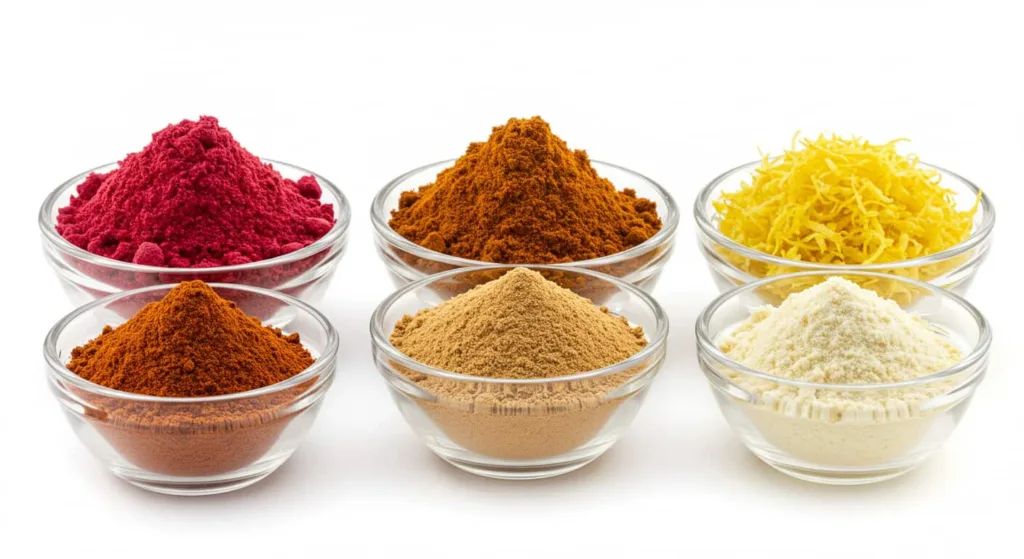
- Lemon Zest – Offers a similar citrusy note.
- Vinegar Powder – Provides acidity in dry form.
- Tamarind Powder – Mimics the tartness of sumac.
- Pomegranate Powder – Slightly sweet but works well in many recipes.
5. Where to Buy Sumac Spice
To get the best sumac, consider these options:
- Middle Eastern & Mediterranean markets – Often the freshest source.
- Specialty spice stores – Offer premium organic options.
- Online retailers (Amazon, Walmart, spice shops) – Convenient but check reviews for quality assurance.
6. Cooking With Sumac: How to Use Sumac in Your Dishes
- Sprinkle on salads, grilled meats, and roasted veggies for a tangy finish.
- Blend into spice mixes like Za’atar for added complexity.
- Mix into yogurt-based dips and sauces for a creamy yet zesty taste.
- Use in marinades to tenderize meats while enhancing their flavor.
- Use on sauces (Sauce for Crab Cakes)
7. Sumac Spice Recipes
7.1 Sumac Grilled Chicken

Ingredients
| Ingredient | Quantity |
|---|---|
| Chicken breasts | 2 |
| Sumac spice | 1 tbsp |
| Olive oil | 2 tbsp |
| Garlic (minced) | 2 cloves |
| Lemon juice | 1 tbsp |
| Salt & pepper | To taste |
Instructions
1 Mix sumac, olive oil, garlic, lemon juice, salt, and pepper.
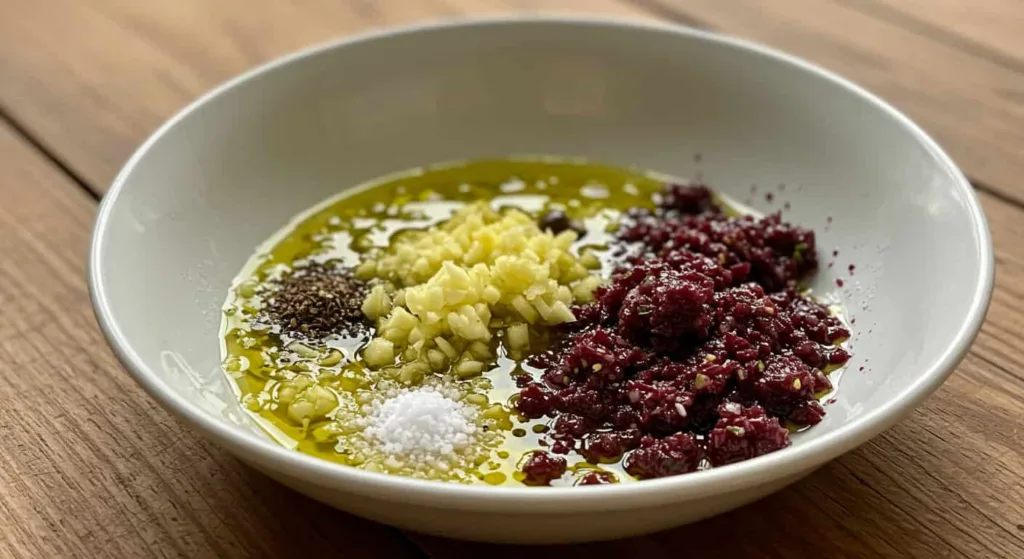
2 Marinate chicken for at least 30 minutes.

3 Grill over medium heat until fully cooked.
4 Serve with a side of hummus or salad.
7.2 Others Recipes
8. FAQs About Sumac Spice
What is sumac spice used for?
Sumac is a versatile seasoning used in salads, meats, dips, and spice blends like Za’atar.
Is sumac spice healthy?
Yes! Sumac is rich in antioxidants, supports heart health, and aids digestion.
What’s the best sumac spice substitute?
Lemon zest, vinegar powder, tamarind, or pomegranate powder work well.
Can I use sumac in baking?
Absolutely! It adds a unique tangy twist to breads and desserts.
Where can I buy sumac spice?
Middle Eastern stores, spice shops, and online retailers are the best sources.
Conclusion: Elevate Your Cooking with Sumac Spice
Sumac spice is a game-changer for anyone who loves bold, tangy flavors. Whether you’re adding it to meats, salads, or traditional Middle Eastern dishes, this spice will enhance your cooking in countless ways. Now that you know where to buy it, how to use it, and even how to substitute it, there’s no reason not to experiment with sumac in your kitchen today!
Try Sumac in Your Next Recipe!
Next time you’re cooking, sprinkle some sumac over your dish and experience the magic firsthand. Have you tried sumac before? Let us know your favorite ways to use it in the comments below!

